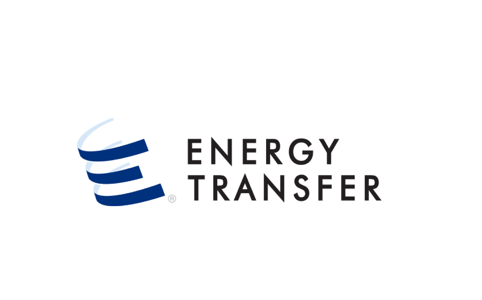Energy Transfer (NYSE: ET) is executing one of the most aggressive infrastructure buildouts in the U.S. midstream sector, combining record production growth in the Permian Basin with strategic pipeline, processing, and export expansions. Backed by a fee-based business model and a nearly 8,200-mile Texas pipeline permit, the company is building for both immediate market demand and decades of stable cash flow.
Permian Basin Oil & Gas Operator Directory – $10
Includes: Account Name, Wells Drilled, Rig Count, Location….
Permian Basin: Unprecedented Growth Driving Infrastructure Needs
The Permian Basin remains the undisputed leader in U.S. oil and gas production, and Energy Transfer is capitalizing on that momentum. In its Q2 2025 earnings call, Co-CEO Marshal S. McCrea highlighted the scale of growth:
“We’ve seen 10 Bcf of growth over the last four or five years out of the Permian. We think we’ll go up another six to seven over the next four or five years.”
Legacy Permian throughput increased 9% year-over-year in 2024, spurring investment in new and expanded processing capacity:
- Badger Plant – 200 MMcf/d (Delaware Basin) coming online mid-2025.
- Mustang Draw Plant – 275 MMcf/d (Midland Basin) scheduled for H1 2026.
- Additional 100 MMcf/d capacity upgrades at existing plants by Q1 2025.
McCrea summed it up:
“There’s just an insatiable need for more cryogenic processing plants in the Permian Basin, and we are so well-positioned to benefit from that across our entire enterprise.”
Texas Air Permits Signal Expansion Across Key Counties
The Texas Commission on Environmental Quality (TCEQ) approved multiple air permits for Energy Transfer in 2025, supporting compressor station and processing plant projects in Eastland, Andrews, Glasscock, Howard, Martin, and Coke counties.
These permits reflect strategic capacity increases in areas directly tied to Permian growth, particularly in West Texas. Initial builds and renewals ensure operational flexibility, while notifications and revisions indicate ongoing modernization efforts.
8,191 Miles of Pipeline Infrastructure Under One Permit
In March 2025, the Railroad Commission of Texas approved T-4 Permit #09207, consolidating 8,191.67 miles of natural gas infrastructure under one authorization:
- Regulated: 1,576.09 miles
- Unregulated: 6,615.58 miles
- Coverage in 40+ counties, including Reeves, Loving, Ward, and Midland.
- 61+ miles of new gathering lines to reduce flaring and increase takeaway capacity.
Much of this new pipeline mileage supports Delaware Basin gathering systems, reclassifying lines from transmission to gathering for more efficient processing closer to the wellhead. The permit also integrates Anadarko Basin assets, shifting certain interstate lines into Texas intrastate service to strengthen regional connectivity.
Major Pipeline Investments
Energy Transfer’s flagship Hugh Brinson Pipeline will move up to 2.2 Bcf/d from Waha to Maypearl, Texas:
- Phase 1: 1.5 Bcf/d capacity online late 2026.
- Phase 2: Expansion to full capacity under review.
- Total Investment: $2.7 billion, fully backed by long-term, fee-based contracts.
Co-CEO Thomas E. Long positioned the project as critical for Texas’s economic future:
“The Hugh Brinson pipeline will further establish Energy Transfer as the premier option to support power plant and data center growth in the state of Texas.”
Export Infrastructure: Meeting Global Demand
Energy Transfer is matching U.S. production growth with international market access. In 2024, the company set records for NGL exports from its Nederland and Marcus Hook terminals. Key 2025–2026 projects include:
- Nederland Flexport Expansion – Increasing ethane & propane export capacity (mid-2025) and adding ethylene exports by Q4 2025.
- Marcus Hook Terminal Expansion – Adding 900,000-barrel refrigerated ethane storage and boosting LPG capacity.
- Lake Charles LNG – 20-year Chevron offtake deal (2 MTPA) signed; >20 MTPA in negotiations; FID expected Q4 2025.
Fee-Based Stability & Long-Term Returns
Over 90% of Adjusted EBITDA comes from fee-based contracts, insulating margins from commodity price volatility and ensuring predictable cash flows. Expansion projects are underpinned by take-or-pay agreements, reinforcing Energy Transfer’s commitment to financial discipline.
McCrea reinforced this model:
“With more than 90% of our cash flow coming from fee-based contracts, we are well insulated from commodity price swings, which helps protect our margins.”
Bottom Line
Energy Transfer’s combination of Permian Basin production growth, Texas permit approvals, multi-billion-dollar midstream investments, and surging export capabilities positions it as one of the most important infrastructure providers in the U.S. energy sector.
With nearly 8,200 miles of Texas natural gas infrastructure under permit, record throughput, and a robust project pipeline, ET is not just keeping up with market demand—it’s shaping the infrastructure backbone for the next decade of North American energy dominance.



